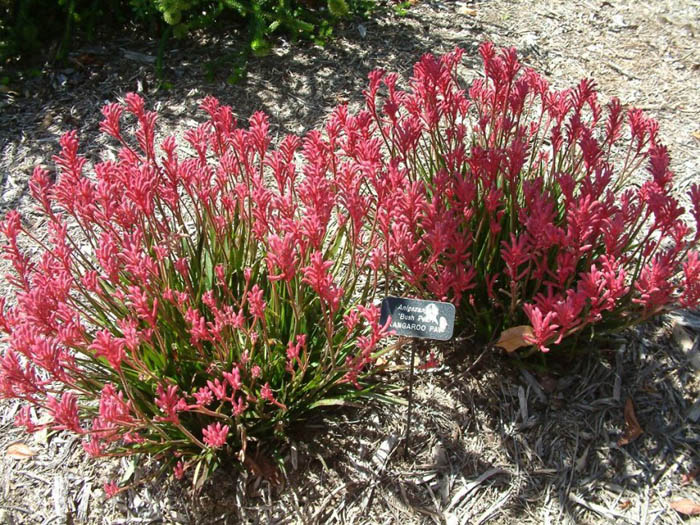Anigozanthos flavidus 'Bush Pearl'
Bush Pearl Kangaroo Paws

Description
Upright perennial plant with 1 foot tall narrow, sword-like, light green foliage. From spring to fall (nearly year round along coast) appear the bright pink tubular flower buds that flare open at tips like a small paw The flowers are held on branching pink woolly stems to 1 to 2 feet tall. Plant in a sunny and open position in the garden in well drained soils.
Maintenance Tips
Anigozanthos flavidus ‘Bush Pearl’ is one of the many dwarf-sized varieties of the Kangaroo Paws. It is an evergreen perennial with a strappy leaf structure that tops out at 12-15" and flower stalks that stand above the foliage another 6". This is a very low-maintenance plant that only requires deadheading the spent blooms to keep it looking and performing its best. When the bright pink flower starts to fade to a wheat color, that would be the time for cleaning up the plant. The old flower stalks will not re-bloom so they should be cut back completely down inside of the foliage. New flower stalks will emerge throughout the spring and summer. Along the coast or in humid climates, this plant is susceptible to some fungal diseases. Plant them in well-drained soil in areas that are on the dry side to help avoid such problems. They are also very attractive to snails and slugs, so it is best to avoid conditions where these pests thrive.
Plant Type
Perennial
Height Range
1-3'
Flower Color
Pink
Flower Season
Spring, Summer, Fall
Leaf Color
Light Green
Bark Color
n/a
Fruit Color
n/a
Fruit Season
n/a
Sun
Full
Water
Low
Growth Rate
Fast
Soil Type
Sandy, Loam, Rocky
Soil Condition
Average, Well-drained
Soil pH
Neutral
Adverse Factors
n/a
Design Styles
Meadow, Mediterranean, Ranch
Accenting Features
Fall Color, Showy Flowers, Specimen
Seasonal Interest
Spring, Summer, Fall
Location Uses
Entry, Parking Strip, Park, Parking Lot, Raised Planter, Swimming Pool, Walkways, With Rocks
Special Uses
Container, Cut Flowers, Filler, Mass Planting
Attracts Wildlife
n/a
Water Saving Tip:
Water between sunset and sunrise when temperatures and wind are the lowest.